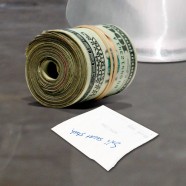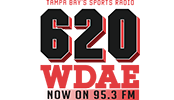Bankroll Building
Building a Bankroll
Before sports bettors even get started in this business bankroll building should be a major consideration. I can sit here and talk about money management at great lengths however before that becomes relevant a bettor needs a starting point before this makes any sense. I’ve learned the hard way first hand, trying to forge a path as a sports bettor (beginning back in junior high) figure out what works and what won’t for long term success. For our purposes here let’s start at the top and go through basic questions we should be asking ourselves, even as a recreational bettor, before embarking on this journey.
How much money can I afford to lose?
This may seem like an absurd question to ask when getting started but I feel it’s the most important. Everyone can always afford to make more money however what are you able to lose comfortably (I use the term loosely) without it having major repercussions on your day to day. Everyone’s bankroll is different; some start with 500, others can afford 1000, while there are people out there using 10,000 as their jumping off point. My single best piece of advice is to start with an amount that won’t change your day to day operating under the assumption you’ll be losing this amount by year’s end. Figure this is the discretionary income you’d be willing to spend on rounds of golf or any other recreational pursuit.
How much should I bet?
Once you have a set bankroll amount you can begin to figure out what your betting units need to be. Kelly Criterion is a useful math driven technique for beginners and veterans alike meaning your bet size will fluctuate with the size of your bankroll. Of course this doesn’t have to be iron clad but it will keep you in the game longer while enduring growing pains. I typically advise people to start with bet sizes of 2% up to 5%. The majority of your wagers should be of the 2% variety while a select few should fall into the 5% (representing 1/20th) of your entire roll. I typically have 65% of my personal bets in the single position range while the remaining 35% will be adjusted higher depending on my expectation for success. Of course I expect to win all my bets but the longer you’re in the business you begin to realize the types of betting situations that warrant more than a single unit (position) on them.
Why shouldn’t I flat bet?
People will tell you 60% is the gold standard for a handicapper…I’m here to tell you that’s great in theory but it’s complete bullshit. Winning 6 out of 10 bets sounds attainable but it’s not sustainable over the long haul (unless you bet absurd ML’s and then winning percentage is even more meaningless). The goal is to maximize your earnings when an opportunity presents itself. As you recognize edge, you’ll begin to understand when you need to step out and fire on a game. My feeling is that the bulk of your 2% bets should win at a 52-53% clip. When you up the ante and fire 3-5% your win percentage should reflect that and be between 55-60 while the real mother of all bets (aka MOAB’s) from 5-10% of your bankroll should offer a success rate of 70%. When you first get started I would say most of your bets should be single positions because it takes years of practice to know when it’s time to fire.
I’ll also sit on my soapbox right now and say win percentage is the most overrated metric a handicapper can use to grade his success. The next time a bettor can pay his bills with win percentage will be the first. The name of the game is making money and if that means hitting 47% all with dogs of +150 I’ll take that all day over a bettor hitting 60% laying -300 and losing his ass. If you’re looking for a handicapper on twitter who approaches his betting in this manner follow @NoJokeNHL. New bettors could learn a thing or two from his methods which focus on dollars won not a gaudy win percentage.
Is there a limit as to how much of my bankroll I should have in action at one time?
Ask 100 handicappers and you’ll get 100 different answers. Personally I don’t and never will ascribe to the thought process you have to lose it all before you can learn to win. Yes, losing is part of the process in sports betting. No business owner or athlete runs at full speed right away, there’s bumps and bruises along the road. I typically tell newer bettors never to over extend themselves meaning no more than 20-25% of your roll in action at one time (yes, that includes football Saturdays and Sundays in the fall where you might want to Let it all ride). Futures, win totals, etc are a different animal and while they do represent part of your bankroll, you shouldn’t automatically back away from a strong position just to stay liquid. Remember betting sports for 98% of the public is about having fun more than it is turning a profit. This article isn’t here to turn you into a pro instead it’s to help the casual bettor get more enjoyment from his (or her) betting bankroll.












